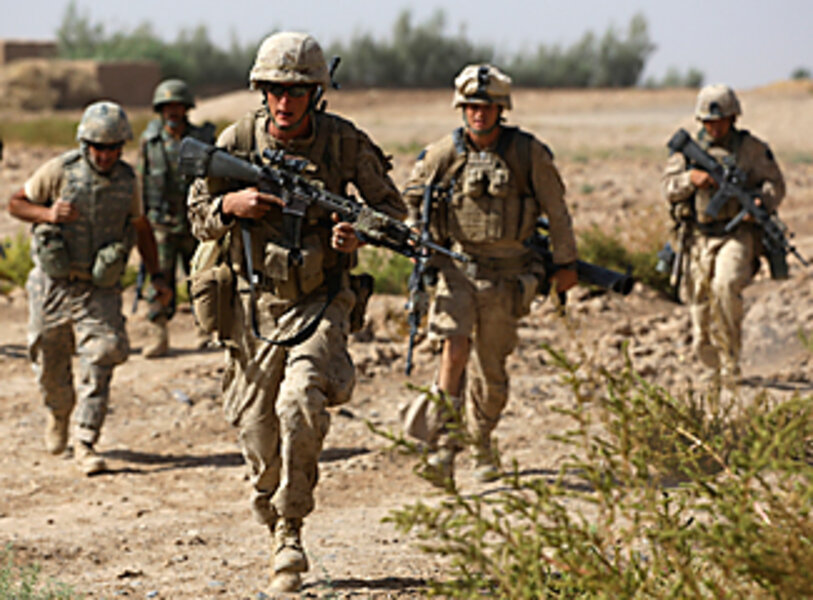Afghanistan: Deadliest attack on US forces
Loading...
• A daily summary of global reports on security issues.
In the deadliest fight for coalition forces in Afghanistan in more than a year, Taliban militants attacked two remote American and Afghan military outposts Saturday, killing eight US soldiers and two Afghan soldiers.
The attack, in eastern Nuristan Province, underscores militants' growing strength in Afghanistan and increases pressure on President Obama as he completes a review of the US strategy in Afghanistan.
The American troops stationed at the outposts were scheduled to leave the remote area as part of a new US strategy to concentrate forces in more populated areas.
The Washington Post reports that the militants were members of a Taliban group, probably Hezb-e-Islami Gulbuddin, that included Pakistani, Uzbek, and Arab fighters. The attack began on Saturday morning and continued all day as an estimated 300 fighters came from a nearby mosque and village and attacked the coalition outposts using rifles, machine guns, grenades, and rockets.
The US military said the troops eventually repelled the attack, "inflicting high enemy casualties," after calling in helicopter and plane support. By Sunday morning, a military spokeswoman said the area was "largely secure but I do think there is still some activity," reports the Post. The Taliban took responsibility for the attack.
The New York Times reports that 11 Afghan police officers were also kidnapped in the attack, which took place in the eastern part of the province, which borders Pakistan. (See a map of the region here)
This is not the first serious attack in this area; in July 2008, nine US soldiers died in a similar attack on a small outpost in Wanat in an attack the Times calls the "Black Hawk Down" of Afghanistan.
Saturday's battle was the deadliest for US forces since the battle of Wanat, and the deadliest for coalition forces in Afghanistan since 10 French troops were killed in an ambush in eastern Afghanistan in August 2008, according to Agence France-Presse.
This year has seen a rise in the number of US casualties in Afghanistan as the US troop presence has increased to 68,000 and the frequency of confrontations with the Taliban has grown. The Christian Science Monitor reported last month that 80 percent of Afghanistan now sees heavy insurgent activity, as opposed to 54 percent two years ago, with the violence growing particularly in northern Afghanistan.
A map of insurgent activity shows that Nuristan is one of the provinces with heavy insurgent or Taliban activity.
According to the Post, the Taliban has appointed a shadow governor for the outpost, Mullah Dost Muhammad, and runs a training camp in the area, which is heavily forested. The Associated Press reports that the area is also a haven for Al Qaeda forces, and that Osama bin Laden considered the area a "useful hiding ground."
Afghanistan's northeastern Nuristan and Kunar provinces are home to al-Qaida bases as well as those of wanted terrorist Gulbuddin Hekmatyar….
The region was key for Arab militants who battled alongside Afghan warriors during the 1980s U.S.-backed war against invading Russians because it is a rare place in south Asia where the Wahabi sect of Islam is practiced — the same sect followed by Osama bin Laden and most Saudis.
Many Arabs remained in Afghanistan, marrying Afghans and integrating themselves into local society. Many also belonged to Hekmatyar's Hezb-e-Islami group, now sought as terrorists by the U.S.-led coalition.
The attack will likely put additional attention on the strategy shift put forth by the new commander of US forces in Afghanistan, Gen. Stanley McChrystal. It calls for US troops to leave less populated areas such as where the attack took place, where they focus on fighting the Taliban, and instead move to more densely populated areas and focus on protecting civilians.





